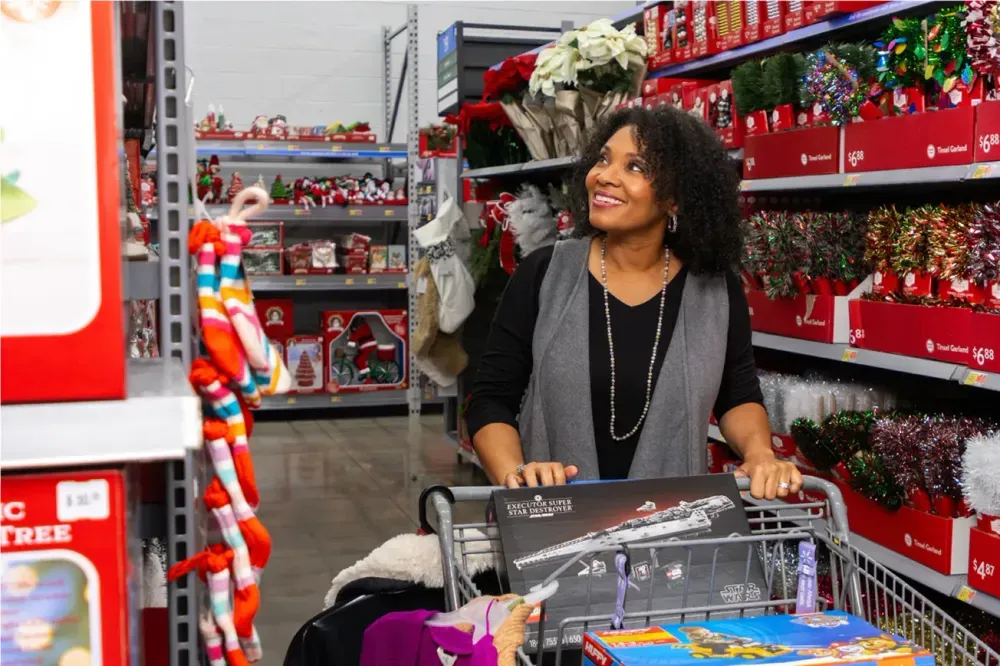Table of Contents
NEW YORK— The holiday shopping outlook for 2024 appears positive, with consumers planning to spend an average of $1,014 on gifts, up from $923 last year. This increase bodes well for retailers, suggesting a potentially robust holiday season.
The National Retail Federation (NRF) is projecting a sales growth of 2.5% to 3.5%, estimating total holiday sales between $979.5 billion and $989 billion. Despite some recent economic challenges, such as slower job growth and a slight dip in GDP, NRF’s chief economist, Jack Kleinhenz, remains optimistic, attributing fluctuations to temporary factors like natural disasters and labor strikes.
“The economy is fundamentally healthy and continues to hold momentum,” Kleinhenz stated in NRF’s November Monthly Economic Review. While recent data show slower job gains and a slight dip in GDP growth, Kleinhenz attributed this to temporary disruptions, including hurricanes and labor strikes, and said that broader economic indicators remain strong.
October’s job growth data revealed an addition of just 12,000 jobs. However, Kleinhenz pointed out a three-month average of 104,000 jobs added, underscoring resilient employment trends. Meanwhile, GDP growth held steady at a robust 2.8% in Q3, marking ten consecutive quarters of “solid” expansion, driven by consumer spending.
Wages and salaries rose 3.9% year over year as of September, providing a buffer against inflation. The Personal Consumption Expenditures Price Index, a key inflation measure, fell to 2.1% in September, nearing the Federal Reserve’s target. “Households are starting the season in decent financial shape,” Kleinhenz noted, with rising home values, steady income, and a strong stock market contributing to consumer confidence.
Kleinhenz also voiced optimism about continued economic resilience through year-end. “This holiday season looks very good,” he said, underscoring NRF’s faith in sustained consumer spending.
Circana says consumers going online as well as hitting stores
A new report from Circana highlights that while online shopping is dominant, a significant number of consumers (74%) plan to shop both online and in-store, indicating a blend of digital convenience with the tactile experience of brick-and-mortar shopping. The trend of researching online before purchasing in-store is growing, and many shoppers are also opting to ship gifts directly to friends and family.
“Consumers want convenience and value, and this holiday season, they’ll be leveraging all channels to maximize both,” said Marshal Cohen, Circana’s chief retail advisor. The report highlights a growing trend: shoppers are increasingly researching and comparing prices online before making in-store purchases, blending digital convenience with tactile shopping experiences.
Notably, 77% of holiday shoppers plan to buy from online-only retailers, making e-commerce the leading shopping destination this season. Furthermore, 42% of shoppers plan to ship gifts directly to family and friends, a jump from last year, reflecting the shift toward convenience-driven shopping.
Even Black Friday, historically a brick-and-mortar event, has cemented its role as an online shopping day, underscoring consumer comfort with e-commerce for traditionally in-store events. “A seamless cross-channel experience will be critical this season,” Cohen added, urging retailers to meet evolving consumer demands for a unified shopping journey across online and physical channels.
Overall, the combination of economic resilience and evolving shopping habits suggests a favorable holiday season ahead for both consumers and retailers.








